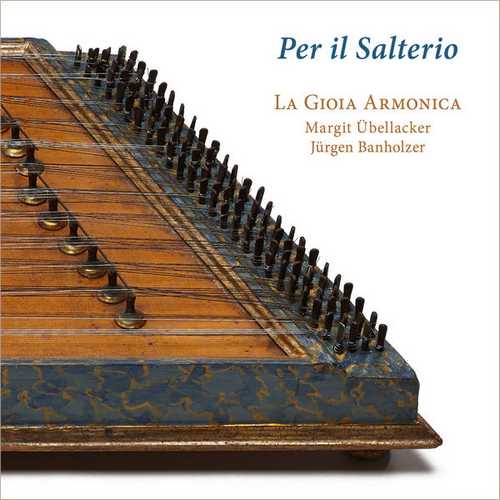
Composer: Baldassare Galuppi, Carlo Monza, Angelo Conti, Pietro Beretti
Performer: Margit Übellacker, Jürgen Banholzer, La Gioia Armonica
Format: FLAC (tracks)
Label: Ramée
Release: 2021
Size: 1.64 GB
Recovery: +3%
Scan: yes
Conti: Sonata for Salterio and Continuo in G Major
01. I. Vivace assai
02. II. Grazioso (I)
03. III. Minuetto Variazione
Monza: Sonata for Salterio and Continuo in C Major
04. I. Allegro
05. II. Largo
06. III. Minuetto
Anonym: Sonata for Salterio and Continuo in G Major
07. I. Allegro (I)
08. II. Cantabile
09. III. Allegro
10. I. [Andante]
11. II. Presto
Galuppi: Sonata for Harpsichord in D major
12. I. Adagio
13. II. Allegro
14. III. Adagio
15. IV. Giga Allegro
Beretti: Sonata for Salterio and Continuo in G Major
16. I. Allegro (II)
17. II. Andante
18. III. Allegro
Monza: Sonata Organ in G Major
19. Flautino
Conti:Sonata for Salterio and Continuo in G Major
20. I. Allegro (III)
21. II. Grazioso (II)
22. III. Allegrissimo
Today there are different types of the instrument known in German-speaking countries as the Hackbrett, mainly associated with local traditional music, such as the cimbalom in Eastern Europe, the santūr in Persia, etc. The history of European music has also known moments when this type of instrument was appreciated in art music, thanks especially to its sonority, which predestined it for the so-called ‘sensitive’ (empfindsam) style. This recording is devoted to the salterio, the Italian form of the instrument, for which a considerable number of works were composed in the eighteenth century. Margit Übellacker and Jürgen Banholzer present a selection of world premiere recordings of sonatas for salterio and basso continuo. These reflect the galant style of north Italy in the second half of the eighteenth century.



